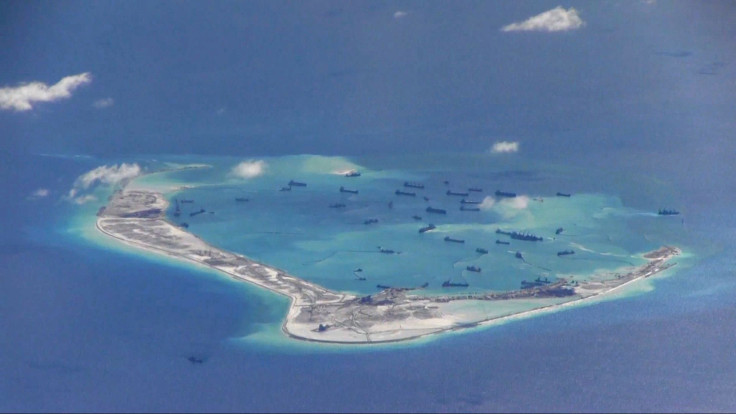South China Sea Dispute: Map, Timeline And Everything We Know About The Military Expansion

It’s an ongoing diplomatic conflict involving several Southeast Asian countries, as well as the United States, and contains layers of military, political and economic intrigue that have resulted in years of back-and-forth by all involved. We’re talking about the South China Sea and, in particular, China’s continued building and installing of man-made islands, some believed to be housing long-range surface-to-air missiles.
U.S. officials revealed China was in the final stages of constructing two dozen buildings on the man-made islands in and around the Spratly Islands, and the facilities could contain the missiles. The construction likely also was a test of President Donald Trump and his new administration’s tough talk on China’s claims to the South China Sea, Reuters reported Wednesday. China’also has fitted the islands with airstrips and roads.
"I want to reiterate that China building facilities, including deploying necessary and appropriate national defense installations in its own territory, is exercising our sovereign right recognized by international law," Chinese Foreign Ministry spokesperson Geng Shuang said.
"We hope other countries respect our efforts and do more to help preserve peace and stability in the region."
It’s a complex issue that may be hard to completely wrap your head around, but we’ve put together a quick breakdown to make you understand the players and stakes involved.
Here’s everything we know about China’s man-made islands and the South China Sea dispute of late.
What Countries Are Involved?
The South China Sea is a massive waterway smack in the middle of six countries: China, the Philippines, Taiwan, Vietnam, Malaysia and Brunei. Each has made territorial claims to part of the massive 1.35 million-square-mile sea.
What Does China Claim?
Though to date it has never explicitly explained the term’s definition, China first came up with its “nine-dash” line around 1947, and while an international, United Nations-backed tribunal ruled last year that it is not an official boundary, China has ignored the decision and continued its work in the sea. Essentially, even though mainland China is some 500 miles away from the Spratly Islands, China’s nine-dash line cuts deep into the sea and abuts the coasts of the other countries.
China has only deepened its territorial stance since the U.N. set up exclusive economic zones (EEZs) in 1973.
The Islands
China started constructing the islands in 2014 by building up sand on the Fiery Cross, Mischief and Subi reefs around the Spratly Islands, and the airstrips on them were labeled as “military-length,” anonymous U.S. officials told Reuters. The buildings are roughly 66 feet long and 33 feet tall.
"It is not like the Chinese to build anything in the South China Sea just to build it, and these structures resemble others that house SAM batteries, so the logical conclusion is that's what they are for," an official told Reuters about the possible missiles.
Reasons: Military, Political or Economic?
Try all of the above. Or at least the last two as reasons. Going back to the U.N.’s establishment of EEZs, if China continues to claim the islands as its territory it could further expand its EEZ within 200 nautical miles of the islands, the Times reported. That’s significant not just for the other countries involved, but also because the South China Sea is estimated to hold 11 billion barrels of oil, plus 109 trillion cubic feet of natural gas. In addition, 30 percent of the world’s trade makes its way through the waterway, Vox reported.
© Copyright IBTimes 2024. All rights reserved.











